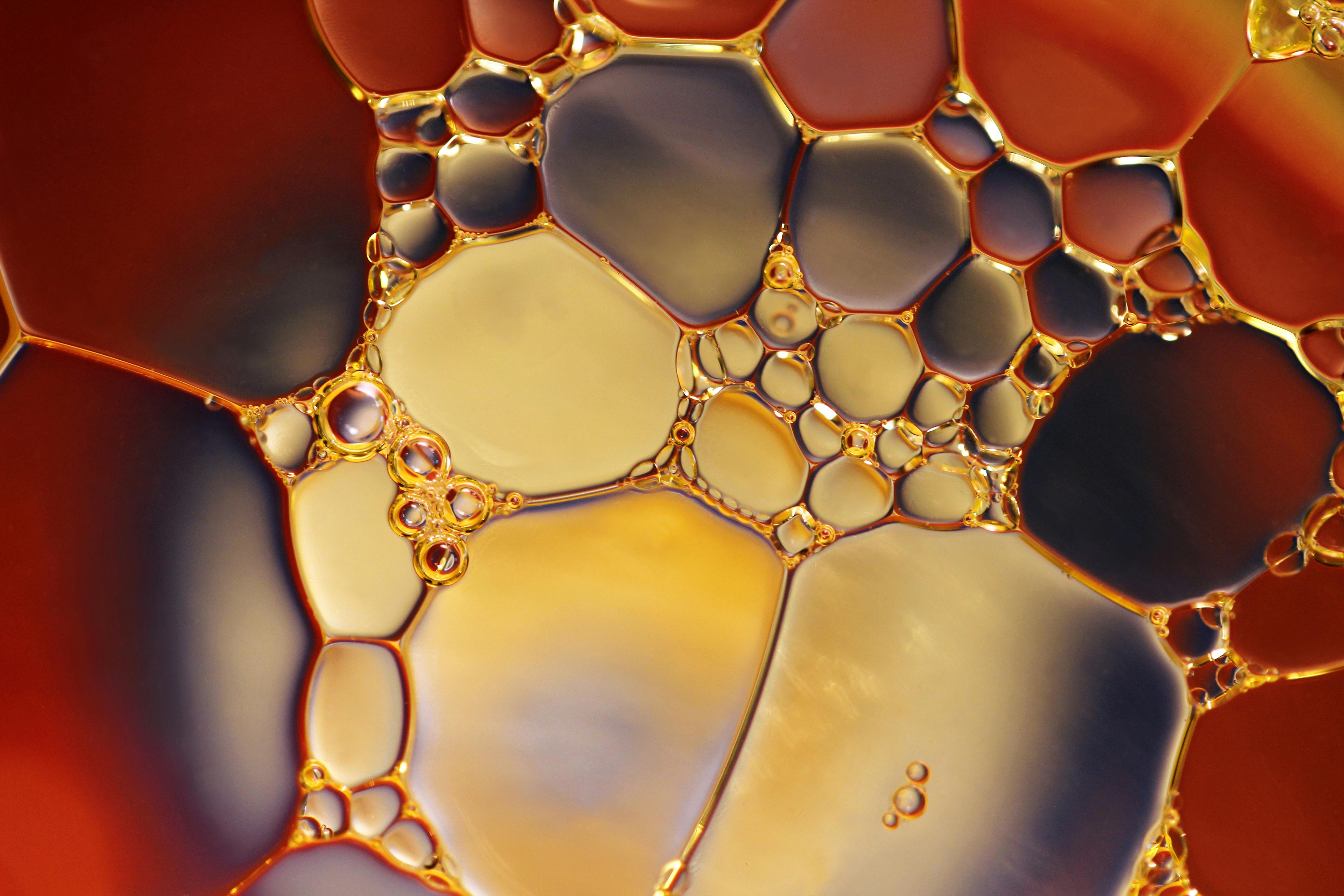Fractional distillation is a technique used in chemistry to separate or purify a mixture of two or more liquids that have different boiling points. It is an important process in many industries such as petroleum refining, chemical manufacturing, and food processing. The process involves heating the mixture to its boiling point and then condensing the vapors as they rise. The condensed liquid is then collected in fractions, each containing a different set of components based on their relative boiling points. Fractional distillation can be used to separate complex mixtures into individual compounds or to purify a single compound from impurities.Fractional distillation is a type of distillation technique used in chemistry to separate a mixture of two or more liquids with different boiling points. The process involves heating the mixture to its boiling point, collecting the vapor produced and then condensing it back into liquid form. This process can be repeated multiple times to further purify the product.
How Does Fractional Distillation Work?
Fractional distillation is a process used to separate mixtures of liquids with different boiling points. It works by heating the mixture of liquids to a temperature higher than the boiling point of the lowest boiling liquid, and lower than the boiling point of the highest boiling liquid. As the mixture is heated, each of the liquids evaporates and rises up in a column until it condenses into a liquid again at a particular temperature. The condensation then falls back into the container below it, allowing each component of the liquid to be collected separately. This process can be repeated multiple times to further refine or purify each individual component in the mixture.
The process is made easier by using special equipment such as fractional distillation columns. These columns allow for more efficient separation as they provide more surface area for condensation and evaporation to occur, while also allowing for better control over how quickly each component is evaporated and condensed. The process can be further refined by using different types of fractional distillation columns such as packed beds, plate columns or bubble cap trays which all work differently but ultimately have similar results.
<
Fractional Distillation
Fractional distillation is a process used to separate mixtures of liquids that have different boiling points. This process uses a fractionating column, which is a vertical tube filled with packing material, such as glass or metal, that increases the surface area of the liquid inside the column. An example of a mixture that can be separated using this method is crude oil. The boiling points of various components in the oil are different, so when heated, they can be collected at different levels in the fractionating column. As the vapors rise up through the column, they condense and separate into their constituent components. The heavier components will condense at lower temperatures and collect at the bottom of the fractionating column while lighter components will condense at higher temperatures and collect at the top. This process can be repeated multiple times until all components of interest are separated from one another.
The temperature of each component in a mixture is important for fractional distillation to work properly. The mixture must be heated to its boiling point before it is added to the fractionating column. Once it reaches this temperature, vapors begin to form and travel up through the
Advantages of Fractional Distillation
Fractional distillation is a method of separating mixtures of liquids with different boiling points. This process is widely used in the chemical and petrochemical industries due to its high efficiency and accuracy. The main advantages of fractional distillation include its ability to separate complex mixtures, its precise control over the separation process, and its cost-effectiveness.
Fractional distillation can separate complex mixtures more effectively than other methods such as simple distillation or short-path distillation. This is because the process involves repeated distillations at lower temperatures, allowing for more accurate separations. Fractional distillation also has greater control over the separation process compared to other methods, allowing for more precise separations.
Fractional distillation is also much more cost-effective than other methods due to its ability to separate components with a high degree of accuracy. It also requires less energy input than other processes, making it an efficient choice for many chemical and petrochemical processes. Additionally, it requires little maintenance and does not use hazardous materials or require special
Disadvantages of Fractional Distillation
Fractional distillation has a few disadvantages that should be considered when choosing between distillation methods. Firstly, the process is relatively slow and can take up to several hours to complete. Secondly, it requires a great deal of energy and therefore can be costly to operate. Additionally, fractional distillation requires specialized equipment and expertise which may not be available in some areas. Finally, certain types of impurities may not be removed using this method, meaning additional purification steps may be needed in order to achieve the desired purity level.
In conclusion, fractional distillation is a valuable technique for separating complex mixtures into their components but should only be used when other methods are not practical or effective. Careful consideration should always be given before deciding whether this method is the right choice for a particular application.

Fractional Distillation Used in Industry
Fractional distillation is a widely used process in the industrial sector for separating mixtures of liquids with different boiling points. It is used to purify and separate components of crude oil and other similar mixtures. This process relies on differences in the boiling points of the individual components of a mixture. The mixture is heated until it reaches its boiling point, and then the vapors are collected and cooled to separate out the desired components.
The process begins by heating up the mixture until it reaches its boiling point and then collecting the vapors that are produced. The vapors are sent through a distillation column which contains several trays or plates that have holes in them. As the vapor passes through each tray, some of it condenses into liquid. This liquid is then collected and cooled until it forms droplets, which can be separated out into different fractions based on their boiling points. This process is repeated until all of the desired components have been separated out from each other.
Fractional distillation has many applications in industry, including petrochemical processing, pharmaceutical manufacturing, food production, fuel production, water purification,
Applications of Fractional Distillation
Fractional distillation is a widely used process in many industries. It is a process used for separating mixtures based on the differences in the boiling points of the components. Fractional distillation is used in the petroleum industry to produce gasoline and other petroleum products, as well as in the chemical industry to separate and purify different compounds. In addition, fractional distillation is also used to produce essential oils from plants, as well as to separate and purify alcohol.
In the petroleum industry, fractional distillation is used to separate crude oil into useful products such as gasoline, kerosene, diesel fuel, and other various petroleum products. The crude oil is heated to high temperatures and then separated into different fractions based on their boiling points. The lighter fractions such as gasoline boil off first, while heavier fractions such as diesel fuel boil off last. This process allows for the production of useful products from crude oil that would otherwise be unusable.
In the chemical industry, fractional distillation is also used for separating and purifying compounds from natural gas or crude oil streams
Types of Fractional Distillation
Fractional distillation is a technique used to separate mixtures of liquids that have different boiling points. It is the most common form of distillation used in laboratories and industries. There are several types of fractional distillation, each with its own special characteristics and benefits. These include simple distillation, fractional distillation, steam distillation, vacuum distillation, and azeotropic distillation.
Simple Distillation is the process of boiling a liquid mixture at the same temperature until one component separates from another and is collected in its pure form. This type of distillation is used to separate two components with extremely different boiling points, such as water and ethanol.
Fractional Distillation involves multiple heating and cooling cycles in order to separate compounds with closely related boiling points. This method uses the difference in vapor pressures between the components to separate them from each other. It is mainly used to purify volatile organic compounds like gasoline and alcohols.
Steam Distillation is a process that utilizes steam to increase the vapor pressure of a liquid mixture in order to more

Conclusion
Fractional distillation is an incredibly useful tool in chemistry for separating and purifying compounds. It can be used to separate a wide range of mixtures, from liquids to gases, which makes it a very versatile technique. Its ability to separate compounds on the basis of their boiling points allows for very precise control over the composition of a mixture. The process is relatively simple and cost-effective, making it ideal for large-scale applications. With its significant advantages, fractional distillation is certain to remain an indispensable tool in chemistry for many years to come.
Overall, fractional distillation is an invaluable process that can be used in a variety of settings. By taking advantage of the differences in boiling points between components of a mixture, this technique allows scientists and researchers to separate and purify compounds with ease. With its versatility, cost-effectiveness and simplicity, fractional distillation will continue to play an important role in chemical research and industry.

